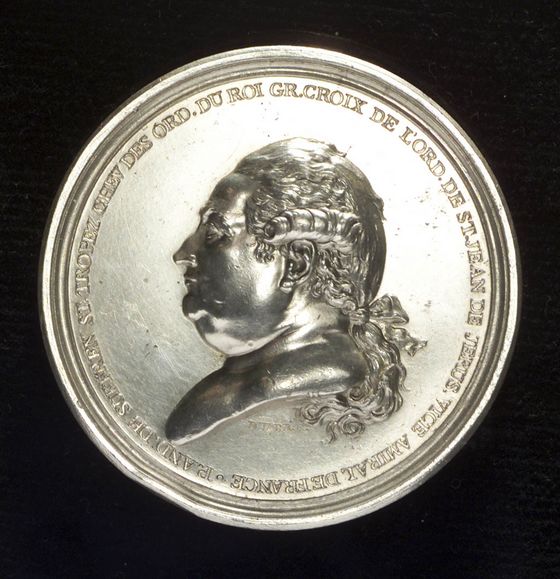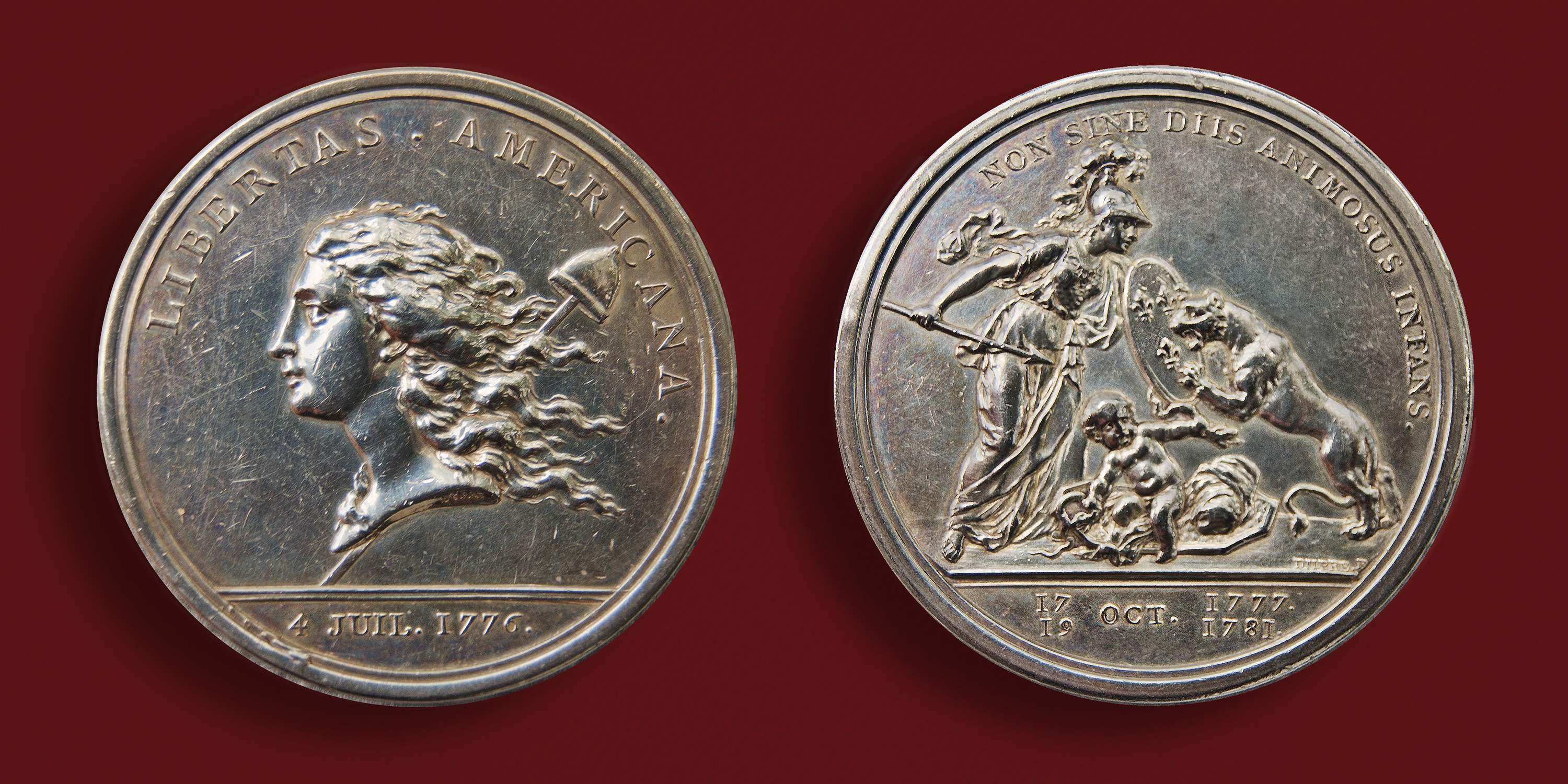Augustin Dupré on:
[Wikipedia]
[Google]
[Amazon]
Augustin Dupré (6 October 1748 – 30 January 1833) was a French engraver of currency and medals, the 14th Graveur général des monnaies (Engraver General of Currency).


Biography
He began his career as an engraver at the royal factory for weapons. Towards 1770, he became established atParis
Paris () is the Capital city, capital and List of communes in France with over 20,000 inhabitants, most populous city of France, with an estimated population of 2,165,423 residents in 2019 in an area of more than 105 km² (41 sq mi), ma ...
, became the student of the sculptor David, and engraved his first medals.
The French Revolution
The French Revolution ( ) was a period of radical political and societal change in France that began with the Estates General of 1789 and ended with the formation of the French Consulate in coup of 18 Brumaire, November 1799. Many of its ...
gave him the opportunity to develop his art. Because the change of regime and the monetary reform required a full change of monetary types, a competition, initiated by the painter Louis David
Jacques-Louis David (; 30 August 1748 – 29 December 1825) was a French painter in the Neoclassical style, considered to be the preeminent painter of the era. In the 1780s, his cerebral brand of history painting marked a change in taste away f ...
, was opened in April 1791 by the Convention nationale
The National Convention (french: link=no, Convention nationale) was the parliament of the Kingdom of France for one day and the French First Republic for the rest of its existence during the French Revolution, following the two-year National ...
. Dupré's design won and was adopted for the new currency, the "Louis conventionnel". Following this success, Dupré was named Graveur général des monnaies by decree of the Assemblée nationale
The National Assembly (french: link=no, italics=set, Assemblée nationale; ) is the lower house of the bicameral French Parliament under the Fifth Republic, the upper house being the Senate (). The National Assembly's legislators are know ...
on 11 July 1791. In France before the revolution there were 31 royal mints, but most of them were no more than sinecures. In 1789, there were no more than 17 mints, and Dupré wanted to have a great new mint in Paris to produce all French currency. However, the Assemblée nationale rejected his idea and retained 8 mints: Paris, Lyon
Lyon,, ; Occitan language, Occitan: ''Lion'', hist. ''Lionés'' also spelled in English as Lyons, is the List of communes in France with over 20,000 inhabitants, third-largest city and Urban area (France), second-largest metropolitan area of F ...
, Bordeaux
Bordeaux ( , ; Gascon oc, Bordèu ; eu, Bordele; it, Bordò; es, Burdeos) is a port city on the river Garonne in the Gironde department, Southwestern France. It is the capital of the Nouvelle-Aquitaine region, as well as the prefect ...
, Bayonne, Perpignan, Nantes, Lille
Lille ( , ; nl, Rijsel ; pcd, Lile; vls, Rysel) is a city in the northern part of France, in French Flanders. On the river Deûle, near France's border with Belgium, it is the capital of the Hauts-de-France region, the prefecture of the N ...
, and Strasbourg. He occupied his official position until 1803, the year in which he was dismissed by a decree of the First Consul
The Consulate (french: Le Consulat) was the top-level Government of France from the fall of the Directory in the coup of 18 Brumaire on 10 November 1799 until the start of the Napoleonic Empire on 18 May 1804. By extension, the term ''The Co ...
of 12 March 1803. He was replaced by Pierre-Joseph Tiolier.
His monetary works
The French Revolution encouraged the artists to celebrate the new order. Augustine Dupré derived the inspiration of his allegoric compositions from the symbolism of antiquity ( tables of law, genius of freedom,Hercules
Hercules (, ) is the Roman equivalent of the Greek divine hero Heracles, son of Jupiter and the mortal Alcmena. In classical mythology, Hercules is famous for his strength and for his numerous far-ranging adventures.
The Romans adapted the ...
, Phrygian cap, fasces of lictor
A lictor (possibly from la, ligare, "to bind") was a Roman civil servant who was an attendant and bodyguard to a magistrate who held ''imperium''. Lictors are documented since the Roman Kingdom, and may have originated with the Etruscans.
Origi ...
s, scales
Scale or scales may refer to:
Mathematics
* Scale (descriptive set theory), an object defined on a set of points
* Scale (ratio), the ratio of a linear dimension of a model to the corresponding dimension of the original
* Scale factor, a number w ...
, etc.). It was the triumph of neoclassical style.
His first contribution was the Louis of gold, 24 livres, portraying ''Au génie'', the obverse still carrying the portrait of Louis XVI
Louis XVI (''Louis-Auguste''; ; 23 August 175421 January 1793) was the last King of France before the fall of the monarchy during the French Revolution. He was referred to as ''Citizen Louis Capet'' during the four months just before he was ...
, the motto ''Roi des Français'' (King of the French), and the date 1792. The reverse represents a ''Génie ailé'' (Winged genius) that writes the word ''Loi'' on a stèle, with the motto ''Le Règne de la Loi'' (The Reign of the Law) and the declaration ''An III de la liberté'' (Year three of the liberty). An écu
The term ''écu'' () or crown may refer to one of several French coins. The first ''écu'' was a gold coin (the ''écu d'or'') minted during the reign of Louis IX of France, in 1266. ''Écu'' (from Latin ''scutum'') means shield, and the coin ...
of six livres and a half écu in silver again take up this design.
When the republic was proclaimed, Dupré engraved the bulk of the new revolutionary decimal currency. He introduced the five franc silver piece stamped with the image of Hercules, ''Union et Force'' which marked the renaissance of the franc, and the coins of 1 centime, 5 centimes, 1 décime and 2 décimes with the head of the republic wearing the Phrygian cap.
Dupré was a talented engraver and the composition which he created for the 5-franc represented the republic during almost 200 years. The écu ''à l'Hercule'' created in 1796, was again struck in 1848, then in 1870 and 1877. The new franc of 1960 renewed honor to Dupré by the striking of silver commemorative coins of 10 francs (1965–1973) and 50 francs (1974–1977).
In 1996 the Fifth Republic also honored him by issuing a 5 franc commemorative coin.
Medals by Dupré
Before the French revolution, Dupré had a reputation as one of the leading French medallists, along withBertrand Andrieu
Bertrand Andrieu (24 November 1761 – 6 December 1822) was a French engraver of medals. He was born in Bordeaux. In France, he was considered as the restorer of the art, which had declined after the time of Louis XIV
Louis XIV (Louis ...
, Pierre Droz, Benjamin Duvivier, Nicolas-Marie Gautteaux, and François Tasselon. Two examples of Dupré's famous medals are in honor of Lavoisier and Admiral Suffren.
His medals related to the American republic include: the Libertas Americana, 1783; the Greene medal, 1787; the Morgan and Jones medals, 1789; the Diplomatic medal, 1792; and two medals of Franklin, 1784 and 1786. Thomas Jefferson ordered the Diplomatic medal in 1790. It is unknown who ordered the two medals of Franklin; it is certain that Franklin himself did not.

References
External links
* {{DEFAULTSORT:Dupre, Augustin 1748 births 1833 deaths 18th-century engravers 19th-century engravers French engravers French medallists 19th-century French sculptors French male sculptors 19th-century French male artists